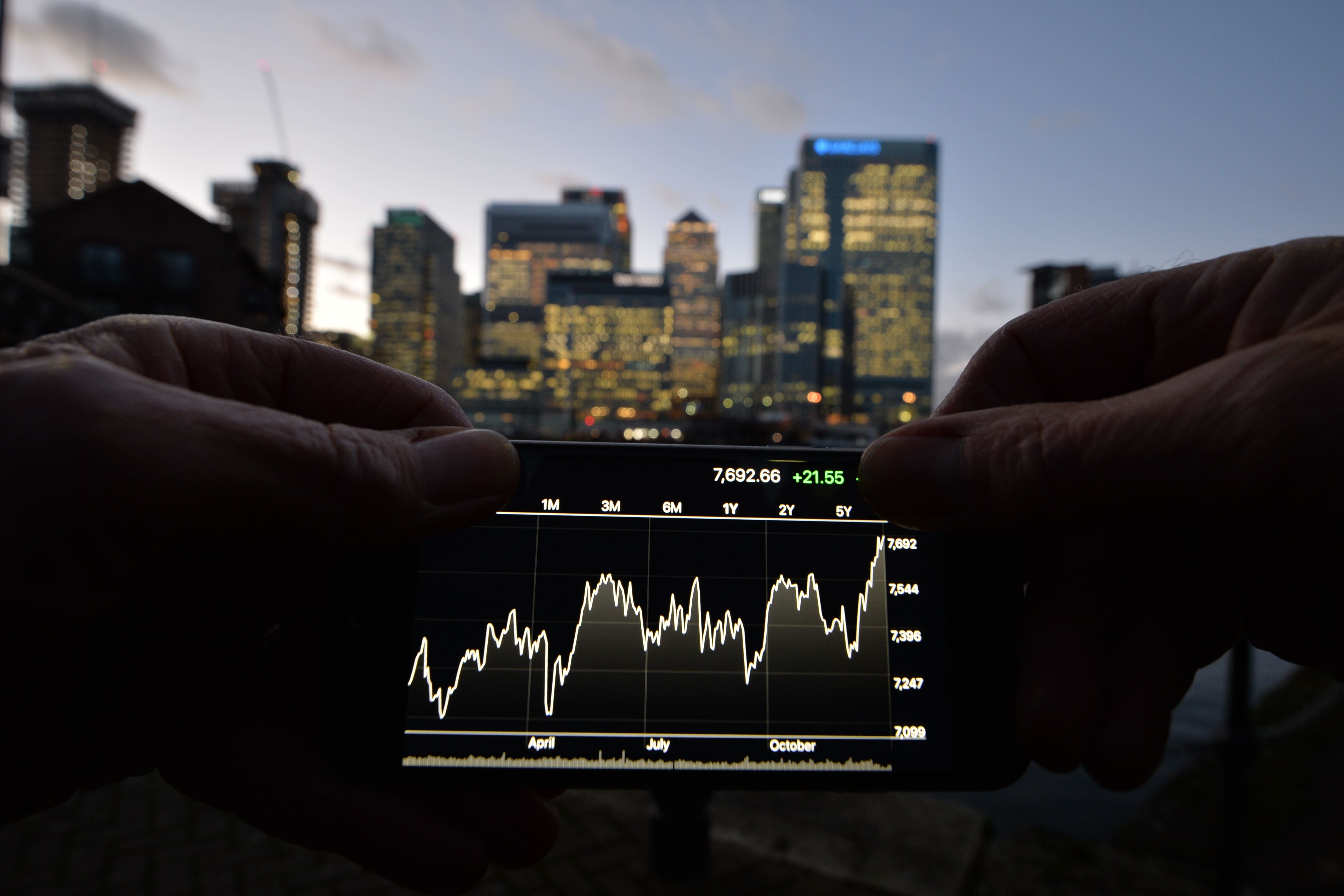FTSE 100 ends year with small rise but lags behind US rival
The index gained 3.8% but international peers enjoyed much more significant rallies over the year.

Your support helps us to tell the story
From reproductive rights to climate change to Big Tech, The Independent is on the ground when the story is developing. Whether it's investigating the financials of Elon Musk's pro-Trump PAC or producing our latest documentary, 'The A Word', which shines a light on the American women fighting for reproductive rights, we know how important it is to parse out the facts from the messaging.
At such a critical moment in US history, we need reporters on the ground. Your donation allows us to keep sending journalists to speak to both sides of the story.
The Independent is trusted by Americans across the entire political spectrum. And unlike many other quality news outlets, we choose not to lock Americans out of our reporting and analysis with paywalls. We believe quality journalism should be available to everyone, paid for by those who can afford it.
Your support makes all the difference.The FTSE 100 has gained 3.8% over 2023, as the UK’s top share index crept higher despite Britain’s stagnating economy and interest rates pushed to the highest level since the 2008 financial crisis.
Nevertheless the index lagged behind international peers which enjoyed significant rallies over the year.
The FTSE 100 gained 281.5 points, or 3.78%, from the last trading day of 2022 to December 29 2023.
In comparison, the US’s top share index, the S&P 500, soared by 25% over the year.
Susannah Streeter, head of money and markets for Hargreaves Lansdown, said: “The FTSE 100 has stumbled over the line, eking out a modest gain for the year but failing to shoot the lights out.
“Compared to its international peers, 3.7% is a paltry rise since the last trading day in 2022, especially when you look at just how high the S&P 500 has climbed, up 25% over the year, while the Dax in Frankfurt has jumped by around 20%.”
Even though the Brexit hangover has eased, the UK’s stagnating economy and volatile political scene of recent years appears to be putting off investors
However, the S&P 500’s strong performance came after it shaved about 20% off its value over 2022 – a year marred by post-Covid recovery and rampant inflation.
The FTSE 100 hit a milestone in mid-February when it surpassed the 8,000-point mark for the first time.
The index saw its best one-day performance on September 14 when it climbed 1.95%, and its worst when it tumbled by 3.83% on March 14, the biggest daily decline since the start of the coronavirus pandemic.
Turmoil in the global banking sector sparked the drop after the collapse of Silicon Valley Bank in the US and subsequently the failure of European banking giant Credit Suisse.
Nevertheless, about £70.5 billion was added to the value of the blue-chip index over the year.
It comes despite the UK economy flatlining and interest rates rising to 5.25%, the highest level since 2008.
Rolls-Royce took the top spot as the best-performing stock this year, with its share price trebling over the year that the engineering giant appointed a new boss and announced a sweeping restructuring programme to recover costs.
Retailer Marks & Spencer also had a good year with its share price more than doubling over 2023, as it shook off cost-of-living concerns and grew sales across its fashion and food businesses.
It was a gloomier year for miners, with Anglo American and Fresnillo among the biggest fallers amid a slowdown in the Chinese economy and turbulence in the energy market.
Ms Streeter suggested London’s stock markets have been overshadowed by New York, where a “frenzy for all things AI (artificial intelligence)” drove buying behaviour.
“Even though the Brexit hangover has eased, the UK’s stagnating economy and volatile political scene of recent years appears to be putting off investors,” she said.
But Chris Beauchamp, chief market analyst at online trading platform IG, said investors will be hopeful the index can “put a better foot forward” in 2024.
Inflation has cooled rapidly in recent months and interest rates have stalled, with expectations that rate cuts are more likely in 2024.
Meanwhile, the FTSE 100 will celebrate its 40th anniversary on January 3, with the index launching in 1984 as a tradeable index of the UK’s top 100 companies.
The combined value of its constituents stands at £1.9 trillion, more than 11 times higher than the value recorded in 1986, when the data first became available.
The index has grown by more than 650% since launch, outperforming the rising value of gold and UK government bonds, according to FTSE Russell.